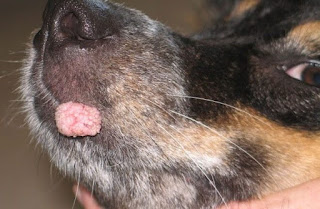Canine Papilloma Virus
Canine Papilloma Virus (CPV) is a viral infection that affects dogs. Understanding CPV, its causes, prevention, and available treatment options will empower you to protect your furry companions.
Causes:
Canine Papilloma Virus is caused by specific strains of the papillomavirus. This highly contagious virus can be transmitted through direct contact with infected dogs or contaminated objects, such as toys, bowls, or shared living spaces. Puppies and dogs with weakened immune systems are more susceptible to CPV.
Prevention:
Preventing the spread of CPV is crucial to safeguarding your dog's health. Here are essential preventive measures:
2. Limiting Exposure: Minimize direct contact between your dog and unfamiliar dogs, particularly those with visible papillomas. Avoid public places where dogs congregate until your pet is fully recovered. 2
Treatment Options:
In most cases, canine papillomas are self-limiting and resolve on their own as the dog's immune system develops immunity to the virus. However, treatment may be necessary if the papillomas cause discomfort, interfere with eating or breathing, or become infected. Here are the treatment options available:
2. Surgical Removal: For larger or bothersome papillomas, surgical removal under anesthesia might be necessary. This procedure helps expedite the healing process and reduces the risk of secondary infections. 4
If you suspect your dog may have CPV or if you have any concerns about their health, we encourage you to schedule an appointment with our clinic. Our veterinary team is here to provide individualized care and answer any questions you may have.
1. https://www.shorturl.cool/e3973
2. https://www.shorturl.cool/043bb
3. https://www.shorturl.cool/7ccc9


Comments
Post a Comment